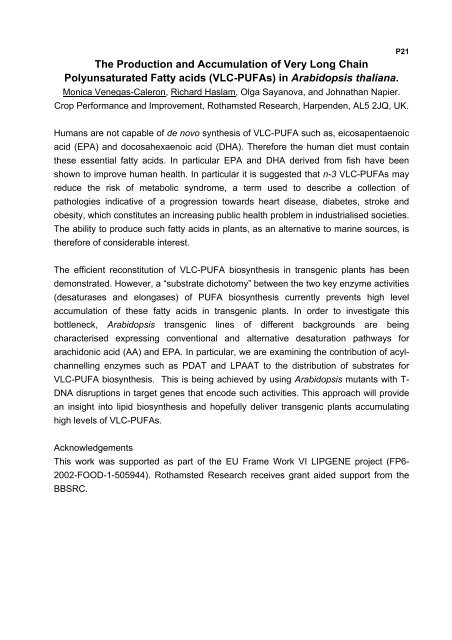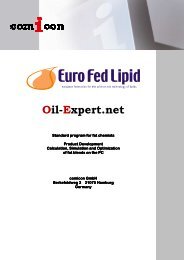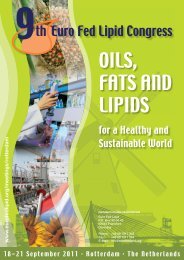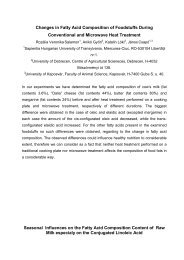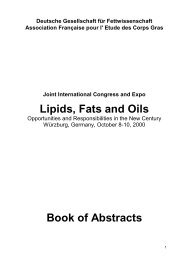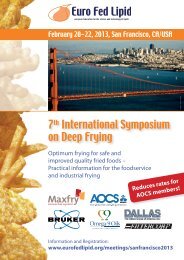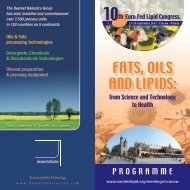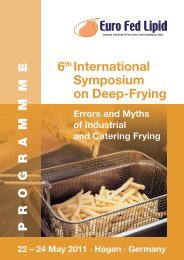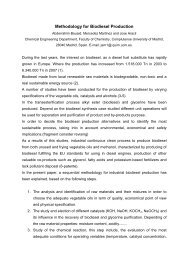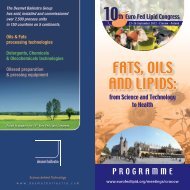Abstracts now available online - Euro Fed Lipid
Abstracts now available online - Euro Fed Lipid
Abstracts now available online - Euro Fed Lipid
Create successful ePaper yourself
Turn your PDF publications into a flip-book with our unique Google optimized e-Paper software.
The Production and Accumulation of Very Long Chain<br />
Polyunsaturated Fatty acids (VLC-PUFAs) in Arabidopsis thaliana.<br />
Monica Venegas-Caleron, Richard Haslam, Olga Sayanova, and Johnathan Napier.<br />
Crop Performance and Improvement, Rothamsted Research, Harpenden, AL5 2JQ, UK.<br />
Humans are not capable of de novo synthesis of VLC-PUFA such as, eicosapentaenoic<br />
acid (EPA) and docosahexaenoic acid (DHA). Therefore the human diet must contain<br />
these essential fatty acids. In particular EPA and DHA derived from fish have been<br />
shown to improve human health. In particular it is suggested that n-3 VLC-PUFAs may<br />
reduce the risk of metabolic syndrome, a term used to describe a collection of<br />
pathologies indicative of a progression towards heart disease, diabetes, stroke and<br />
obesity, which constitutes an increasing public health problem in industrialised societies.<br />
The ability to produce such fatty acids in plants, as an alternative to marine sources, is<br />
therefore of considerable interest.<br />
The efficient reconstitution of VLC-PUFA biosynthesis in transgenic plants has been<br />
demonstrated. However, a “substrate dichotomy” between the two key enzyme activities<br />
(desaturases and elongases) of PUFA biosynthesis currently prevents high level<br />
accumulation of these fatty acids in transgenic plants. In order to investigate this<br />
bottleneck, Arabidopsis transgenic lines of different backgrounds are being<br />
characterised expressing conventional and alternative desaturation pathways for<br />
arachidonic acid (AA) and EPA. In particular, we are examining the contribution of acylchannelling<br />
enzymes such as PDAT and LPAAT to the distribution of substrates for<br />
VLC-PUFA biosynthesis. This is being achieved by using Arabidopsis mutants with T-<br />
DNA disruptions in target genes that encode such activities. This approach will provide<br />
an insight into lipid biosynthesis and hopefully deliver transgenic plants accumulating<br />
high levels of VLC-PUFAs.<br />
Ack<strong>now</strong>ledgements<br />
This work was supported as part of the EU Frame Work VI LIPGENE project (FP6-<br />
2002-FOOD-1-505944). Rothamsted Research receives grant aided support from the<br />
BBSRC.<br />
P21


